
Green Chemical Engineering
Scope & Guideline
Exploring groundbreaking methods for environmental progress.
Introduction
Aims and Scopes
- Sustainable Process Design:
Focuses on the development of processes that utilize renewable resources, reduce waste, and lower energy consumption, thereby promoting sustainability in chemical engineering. - Green Catalysis:
Explores novel catalytic systems that enhance reaction efficiency while utilizing less hazardous materials, aiming to reduce the environmental footprint of chemical reactions. - Biomass Conversion and Utilization:
Investigates methods for converting biomass into valuable chemicals, fuels, and materials, emphasizing the importance of renewable feedstocks in a circular economy. - Environmental Impact Assessment:
Incorporates life cycle assessments and environmental evaluations to gauge the sustainability of chemical processes and products, guiding researchers towards greener alternatives. - Advanced Materials for Chemical Engineering:
Examines the development and application of new materials, such as ionic liquids and metal-organic frameworks, that facilitate more efficient and sustainable chemical processes. - Machine Learning and Computational Methods:
Utilizes machine learning and computational techniques to optimize chemical processes, enhance reaction predictions, and develop innovative materials, bridging the gap between traditional chemical engineering and modern data-driven approaches.
Trending and Emerging
- Machine Learning in Chemical Engineering:
The integration of machine learning techniques into chemical engineering research is gaining momentum, enabling enhanced process optimization, predictive modeling, and data analysis. - Ionic Liquids and Deep Eutectic Solvents:
Research on ionic liquids and deep eutectic solvents is on the rise, showcasing their potential as sustainable alternatives for traditional solvents in various chemical processes. - Photocatalysis and CO2 Utilization:
The application of photocatalysis for CO2 reduction and other sustainable chemical transformations is increasingly prevalent, reflecting a growing interest in harnessing solar energy for chemical processes. - Biosynthesis and Biomanufacturing:
Emerging themes in biosynthesis and biomanufacturing demonstrate a shift towards utilizing biological systems for the production of chemicals, emphasizing sustainability and renewable resources. - Advanced Material Development:
There is a trend towards developing advanced materials, such as nanostructured catalysts and functionalized polymers, which enhance the efficiency and sustainability of chemical processes. - Waste Valorization Techniques:
Research on innovative waste valorization techniques, which convert waste materials into valuable products, is gaining traction, aligning with circular economy principles.
Declining or Waning
- Traditional Solvent Systems:
There has been a noticeable reduction in research focused on traditional solvent systems in favor of more innovative and sustainable solvent alternatives, such as deep eutectic solvents and ionic liquids. - Conventional Catalytic Processes:
Research on conventional catalytic processes has decreased as the field moves towards more innovative and sustainable catalytic systems that utilize less toxic and more efficient materials. - Single-Use Plastics and Conventional Materials:
The focus on single-use plastics and conventional materials is waning as researchers increasingly prioritize biodegradable and renewable materials that align with sustainability goals. - Basic Chemical Processes:
There is a declining emphasis on basic chemical processes that do not incorporate sustainability principles, highlighting the journal's shift towards more complex and innovative approaches. - Generalized Environmental Assessments:
General environmental assessments without a specific focus on life cycle impacts or sustainability metrics are becoming less common, as the field demands more rigorous and detailed evaluations.
Similar Journals
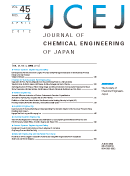
JOURNAL OF CHEMICAL ENGINEERING OF JAPAN
Illuminating Pathways for Future Chemical DiscoveriesJOURNAL OF CHEMICAL ENGINEERING OF JAPAN is a distinguished academic publication in the field of chemical engineering and chemistry, published by Taylor & Francis Ltd. With its ISSN 0021-9592 and E-ISSN 1881-1299, this journal has been a vital resource for researchers and practitioners since its inception in 1968 and continues to provide essential insights and advancements through 2024. The journal operates under an Open Access model as of 2023, promoting wider dissemination of research findings and encouraging collaboration within the global scientific community. Currently categorized in the Q4 quartile for both Chemical Engineering and Chemistry (miscellaneous) in 2023, it ranks within the lower percentiles of its respective fields, offering a platform for emerging scholars to publish their work and gain visibility. As part of Japan's academic landscape, it addresses numerous aspects of chemical engineering, fostering innovation and technical development that contribute to the industry's growth. Engaging with this journal is paramount for those looking to stay informed on the latest research trends and applications in chemical processes.

Trends in Chemistry
Charting New Territories in Chemical DiscourseTrends in Chemistry, published by CELL PRESS, stands at the forefront of the multidisciplinary field of chemistry, offering cutting-edge research and insights that shape contemporary scientific discourse. With its impressive rank of #12 out of 408 in the General Chemistry category of Scopus—placing it in the 97th percentile—this journal represents the pinnacle of academic excellence and innovation. Since its inception in 2019, it has provided a platform for sharing pivotal developments and trends in the chemical sciences, making it an invaluable resource for researchers, professionals, and students alike. Although it operates under subscription access, Trends in Chemistry is dedicated to expanding the frontiers of knowledge and fostering a vibrant academic community. Its Q1 quartile ranking underscores its significance and authority in the field, ensuring that it remains an essential reference point for anyone engaged in the ever-evolving world of chemistry. With its impactful contributions, Trends in Chemistry not only reflects current advancements but also drives future innovation in the discipline.

CHEMIE INGENIEUR TECHNIK
Exploring the Intersection of Chemistry and Engineering.CHEMIE INGENIEUR TECHNIK, published by WILEY-V C H VERLAG GMBH, stands as a significant academic journal in the fields of Chemical Engineering, Chemistry, and Industrial and Manufacturing Engineering. With an ISSN of 0009-286X and an E-ISSN of 1522-2640, this esteemed journal has been contributing to the body of knowledge since 1949 and plans to continue its legacy until 2024. Notably, the journal holds a Q2 quartile ranking in 2023 across various categories, illustrating its recognized impact and relevance within the scientific community, with Scopus ranks indicating it falls within the top 60th to 51st percentiles of its respective fields. Although currently not open access, CHEMIE INGENIEUR TECHNIK provides readers with comprehensive insights into contemporary research, technological advancements, and practical applications, making it an essential resource for researchers, professionals, and students who are keen to stay abreast of developments in chemical processes and engineering advancements.
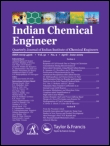
Indian Chemical Engineer
Elevating Standards in Chemical Engineering Research.Indian Chemical Engineer, published by Taylor & Francis Ltd, stands as a reputable journal in the field of chemical engineering, encompassing a wide range of topics pertinent to both academia and industry. With an ISSN of 0019-4506 and an E-ISSN of 0975-007X, this journal has been a key resource for researchers and professionals since its inception in 1992, undergoing a significant evolution from 2009 to 2024. Currently ranked in the Q3 category of chemical engineering (miscellaneous) in 2023, it reflects a dedicated commitment to disseminating innovative research and insights within the discipline. The journal is indexed in Scopus, achieving a rank of 148 out of 273, which denotes its growing influence in the field with a 45th percentile placement. Although currently not an open-access publication, it offers valuable content that contributes extensively to the advancement of chemical engineering research and education. Researchers, professionals, and students alike are encouraged to engage with this publication to stay at the forefront of industry advancements and academic discussions.

KOREAN JOURNAL OF CHEMICAL ENGINEERING
Exploring New Frontiers in Chemical Innovation.The Korean Journal of Chemical Engineering is a prestigious publication by the Korean Institute of Chemical Engineers, dedicated to advancing the field of chemical engineering and its associated sciences. Established in 1984, this journal has made significant contributions to the dissemination of innovative research, covering a broad spectrum of topics within chemical engineering and general chemistry. With a current impact factor placing it in the Q2 quartile within both the chemical engineering and chemistry categories, it is recognized for its rigorous peer-review process and high-quality articles. The journal provides a valuable platform for researchers, professionals, and students to share their findings and collaborate on emerging methodologies and technologies. Although it does not offer open access options, its broad international readership, bolstered by its Scopus rankings — including a commendable #108 in general chemical engineering — ensures widespread visibility and dissemination of published works. As it approaches its 40th anniversary in 2024, the Korean Journal of Chemical Engineering continues to be an essential resource for anyone engaged in the field, driving innovation and academic dialogue worldwide.
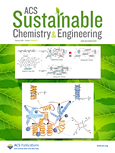
ACS Sustainable Chemistry & Engineering
Advancing sustainability through innovative chemistry.ACS Sustainable Chemistry & Engineering is a premier journal published by the American Chemical Society, dedicated to advancing knowledge and innovation in the fields of sustainable chemistry and engineering. With an impressive impact factor and a consistent ranking in the Q1 category across various disciplines such as Chemical Engineering, Chemistry, Environmental Chemistry, and Renewable Energy, this journal serves as a vital resource for researchers, professionals, and students alike. Since its inception in 2013, the journal has been committed to publishing high-quality, peer-reviewed articles that address the critical challenges of sustainability in chemistry and engineering. With no open-access option currently available, the journal emphasizes the importance of premium scholarly communication. As the field continues to evolve, ACS Sustainable Chemistry & Engineering remains at the forefront of providing cutting-edge research that impacts our understanding and application of sustainable practices in the chemical sciences.

Engineering Review
Connecting researchers for impactful engineering solutions.Engineering Review is a prominent academic journal published by the University of Rijeka, Faculty of Engineering in Croatia. As an emerging outlet in the field of engineering, the journal has been providing a platform for interdisciplinary research since its inception in 2011, with a commitment to disseminating high-quality studies up to the horizon of 2024. Although currently categorized as Q4 in the Engineering (miscellaneous) section and ranking 242 out of 307 in General Engineering per Scopus metrics, the journal aims to bolster its impact and reach within the engineering community. With a focus on innovative approaches and practical applications in various engineering disciplines, Engineering Review invites contributions from researchers, professionals, and students alike, fostering a collaborative environment for the advancement of engineering research in a global context. While it is not an open-access journal at this time, it remains a vital resource for those engaged in cutting-edge engineering endeavors.

Chemical Engineering Journal Advances
Transforming Ideas into Impactful Research in Chemical Engineering.Chemical Engineering Journal Advances, published by Elsevier, is a premier open-access journal dedicated to advancing research and innovation in the field of chemical engineering. With its inception in 2020, the journal has quickly established itself as a key player in disseminating high-quality, peer-reviewed articles, boasting an impressive Q1 ranking in Chemical Engineering and related disciplines for 2023. The journal covers a broad spectrum of topics, including industrial processes, environmental chemistry, and innovative manufacturing techniques, making it essential reading for researchers and professionals aiming to stay at the forefront of chemical engineering advancements. With its commitment to open access, Chemical Engineering Journal Advances ensures that groundbreaking research is readily available to the global scientific community, fostering collaboration and knowledge exchange. Situated in the Netherlands, the journal supports its authors with a robust platform for impactful research dissemination, highlighted by a solid position in the Scopus ranks, indicating its influence and relevance in the field.
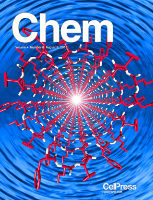
Chem
Unlocking the Secrets of Chemical SciencesChem, published by CELL PRESS, is a renowned academic journal that has rapidly established itself as a leading platform for cutting-edge research in diverse areas such as biochemistry, chemical engineering, materials chemistry, and environmental chemistry. Released under the ISSN 2451-9294, this esteemed journal has achieved an impressive Q1 category ranking across multiple disciplines in 2023, highlighting its significant impact and prominence within the academic community. With a strong focus on innovative studies and interdisciplinary approaches, Chem fosters a vibrant dialogue among researchers, professionals, and students, making it an indispensable resource for those seeking to advance their knowledge and contribute to the evolving field of chemistry. As an open access journal, it aims to democratize knowledge, ensuring that critical research is accessible to a global audience. With its headquarters based in Cambridge, MA, it continues to lead the charge in the dissemination of pivotal findings that shape our understanding of chemical sciences.
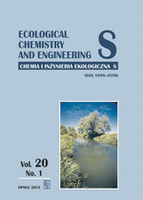
Ecological Chemistry and Engineering S-Chemia I Inzynieria Ekologiczna S
Connecting Research to Real-World Ecological ChallengesEcological Chemistry and Engineering S, a prominent journal in the field of Environmental Chemistry and Engineering, provides a platform for innovative research and critical discussions surrounding ecological solutions and sustainable practices. Published by SCIENDO, this peer-reviewed journal is accessible to researchers and professionals dedicated to advancing our understanding of ecological systems and sustainable engineering practices. With an ISSN of 1898-6196 and an E-ISSN of 2084-4549, the journal has established itself in the academic community, reflected by its Q3 ranking in both Environmental Chemistry and Environmental Engineering categories as of 2023. Covering significant advancements from 2008 to 2024, it serves as an essential resource in advancing knowledge and fostering collaborations within interdisciplinary fields. Despite not offering open access, the journal remains an invaluable resource for researchers and students aiming to contribute to ecological sustainability strategies worldwide.